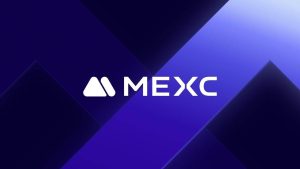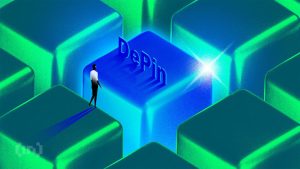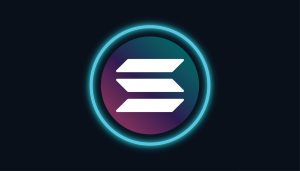Arbitrum Attracts Big DeFi Projects With Easy Layer 2 Solution

Arbitrum is a relatively new solution to Ethereum but has quickly gained popularity with multiple projects onboarding to its platforms.
Arbitrum is a Layer 2 solution for the Ethereum network. It launched in May 2021 by its creators OffChain Labs. The project is the first true Layer 2 with the Ethereum Virtual Machine (EVM) at the bytecode level.
OffChain Labs built the platform in response to an increasing need for scaling solutions that weren’t incredibly complex or expensive. Having EVM compatibility means that projects can deploy without changing the code in their contracts.
“Developers care a lot about both the ease of porting contracts and the importance of composability,” explains Steven Goldfeder, Co-Founder of OffChain Labs and Arbitrum.
Before its mainnet beta launch, the platform was already incredibly popular. At the time of its launch, the platform said that over 250 projects had asked to come online for the developer mainnet.
Some of these projects include big names in DeFi such as SushiSwap, C.R.E.A.M Finance, and Uniswap.
“Arbitrum is leading the way in terms of both product and ecosystem development. They have offered fantastic support on the integration process to all partners while maintaining a high degree of professionalism. Naturally, launching on Arbitrum is a good choice,” says Leo Cheng, Co-Founder and Project Lead at C.R.E.A.M. Finance.
Arbitrum’s optimistic rollups
Arbiturum uses optimistic rollups to beat the Ethereum congestion issue. It attempts to remove the need for zero-knowledge proofs. Instead of each transaction being verified, all are assumed correct.
As a result, the chain can reduce fees. The platform leverages Ethereum to ensure the results of these transactions are correct.
A challenge step secures the blocks. This has validators checking the correctness of the block. If they think it is wrong, they can issue a challenge. If this is proven to be incorrect or the challenge unjustified, then the validator has their stake confiscated.
DeFi often favors rollup technology for its security. While there are many Layer 2 solutions, the benefit of the rollup technology is that it leverages the layer 1 security. This means that developers are generally comfortable with it.
Overall, Arbitrum has tried to make its platform as easy to use as possible. This is both on a technical level and through multiple developer support documents, guiding them on how the platform works.
A big win for developers is the platform’s simplicity. “Deploying on Arbitrum is extremely simple. Arbitrum is unique in that it is EVM-compatible on the bytecode level and therefore supports all EVM languages right out of the box,” explains Goldfeder.
“Composability is extremely important in the DeFi space, and there are immense gains with integrating early,” he says.
Composability, the ability for applications and protocols to interact with one another, is central to DeFi because of the number of protocols in the market. As a result, Layer 2 solutions that address this are highly appreciated.
DeFi and Layer 2
Layer 2 solutions were never originally part of the plan. However, as these ecosystems developed, so did the need for these added platforms.
Following the DeFi Summer of 2020, the growth in DeFi projects running on Ethereum resulted in high gas fees and slow transactions times on the network. Since this has become such a lucrative and innovative space, the move to simply stop working on Ethereum wasn’t an option.
As a result, Layer 2 solutions arrived and have been incredibly popular.
“The future of DeFi is multichain. We’ve believed in a multichain future since the inception of our project and continue to integrate with leading EVM compatible blockchains,” says Cheng.
Ethereum 2.0 and scalability
While solutions like Arbitrum are working effectively, Ethereum isn’t just sitting back and relying on these solutions. The much-anticipated live launch of Ethereum 2.0 is expected to address the scalability and price issues on the network.
For Goldfeder, ETH 2.0 isn’t a threat to the solutions but rather an opportunity.
“When ETH 2.0 scales data availability, this will, in turn, mean more capacity across rollups and ultimately lower costs for users. I view Arbitrum and ETH 2.0 as two critical pieces that will work in tandem to scale Ethereum for the next generation of users,” he says.
For Arbitrum, ETH 2.0 provides the throughput necessary to bring billions of users transacting on the network. Layer 2 solutions will then work to increase this capacity even further.
While ETH 2.0 is highly anticipated, some are concerned with its decentralization. During the Global DeFi Summit, Alex Gluchowski, CEO of Matter Labs, explained that the switch by Ethereum to the proof of stake (POS) consensus leaves an opportunity for an accumulation of wealth by a select few. In turn, this could centralize power in their hands.
Keeping connected to the blockchain
However, while solutions like Arbitrum are of good quality and have significant buy-in, not all Layer 2 solutions are equally as well made.
Recently, during the same Summit, Cornell Professor and CEO of Ava Labs Emin Gün Sirer expressed how Layer 2 solution’s popularity has meant some on offer are not up to scratch.
He says that with so many coming to market, many are creating “the cheapest, dirtiest solutions,” which don’t last. Sirer is not against Layer 2 solutions overall but sees some as being opportunistic in the current climate.
Solutions into the future
As the crypto world waits for ETH 2.0, Layer 2 solutions provide the best outcomes for those already building in the space and those who want to enter it.
How this will change in an industry that develops quickly is still to be seen. However, with the gas prices slowly decreasing, the opportunities in DeFi are continuing to be promising.
Disclaimer
All the information contained on our website is published in good faith and for general information purposes only. Any action the reader takes upon the information found on our website is strictly at their own risk.















